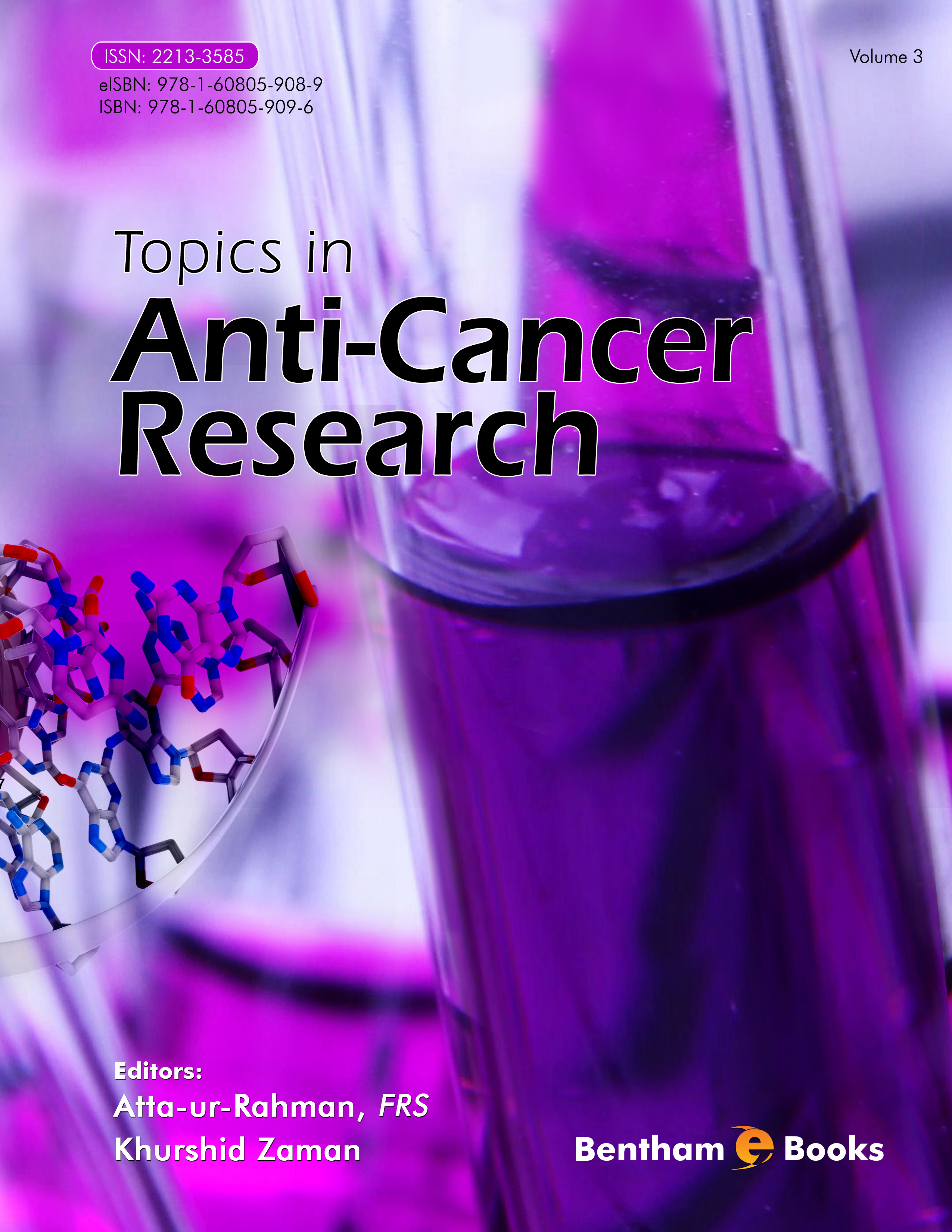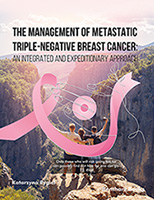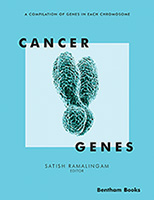This is the third volume of the Patent eBook Series entitled Topics in Anti-Cancer Research. This eBook comprises updated reviews on topics relevant to modern cancer research published in the journal Recent Patents on Anti-Cancer Drug Discovery.
The comprehensive range of themes covered in this third volume will be of benefit to clinicians, scientists and R&D expertslooking for new targets for the prevention of cancer and discovery of drugs for the treatment of different cancer types. Regulation of tumor cells by TRAIL receptors, development of anti- cancer drugs & immunomodulatory drugs, molecular studies of adrenocortical cancer, role of inhibitors of inosine monophosphate dehydrogenase in cancer, recent updates in glioblastoma stem cells, latest approaches for cancer gene therapy and metabolic therapy for cancer were reviewed and updated. The role of pH regulation and application of hyperthermia, thiosemicarbazone derivatives, tamoxifen-based therapies for cancer treatment andproteome-based complex therapy of tumors, calcium signaling and angiogenesis, antineoplastic role of GHRH antagonists and therapeutic applications in human tumors and clinical oncology have been extensively discussed in the light of recent innovations.
The topics covered in this third volume will be valuable for those researchers interested in new methods for the prevention of cancer as well its management.
Micheau et al. discuss updated innovations and information the role of TRAIL/APO2L and TRAIL -Induced Cell Death regulation in cancer therapy. These studies will be of great interest for researchers working in the area of apoptosis and TRAIL receptors DR4 and DR5 (death receptors).
In the second chapter, Petrelli et al. present chemical structures and biological activities of Inosine Monophosphate Dehydrogenase inhibitors (IMPDH) as a target enzyme and as potential anti-cancer drugs. Patents filed in the three major classes of IMPDH are discussed.
Hubalewska-Dydejczyk et al. address genetic and molecular mechanisms of adrenocortical cancer, which are helpful to study the pathology and assessment of molecular markers. This chapter provides interesting information about the latest and promising new therapies for adrenocortical cancer carcinoma treatment.
Chapter 4 by Matheu et al. focuses on the treatment approaches targeting glioblastoma stem cells (GSCs) and also covers glioblastoma cell biology and glioblastoma therapy.
Munaron summarizes recent advances in the area of calcium signaling (Orai/STIM and angiogenesis including properties and function of the intracellular calcium signals (Cai) engaged in the management of vascular endothelial cells (ECs).
Pharmacological activities of Ganodema lucidum are reviewed by Boh in Chapter 6 with focuses on anti-cancer and immunomodulatory properties of this traditional Chinese medicinal Basidiomycete mushroom in the light of patents and scientific articles. Cultivation methods, group of active compounds from polysaccharides, triterpenoids and glycoproteins, and composition of anti-cancer formulations with clinical trials are thoroughly discussed.
Prados et al. have presented the use of reformed vectors and state of art cancer gene therapy strategies, patented clinical or pre-clinical trials in Chapter 7. Different patented processes involved in these approaches based on gene therapy are covered.
Comprehensive study of molecular dynamics (MD) simulations of Imatinib resistance causing T3151 and other mutations in BCR-ABL kinase are reviewed by Lee et al. Findings on the analysis based on dynamic simulations, drug protein interactions and mechanism of drug resistance at the atomic level will be beneficial for the design of new drugs to overcome resistance.
Chapter 9 by Ferreira et al. provides recent and patented literature on the applications of intracellular hyperthermia for cancer treatment. Concepts based on nanotechnology and those without nanotechnology methodologies are categorized. The role of magnetic nanoparticles for the detection and diagnosis of tumors is also reviewed.
Reshkin et al., in Chapter 10 review the latest patented developments for understanding the mechanism of Na+- H+ (NHE1), anti-NHE1pharmacological approaches, use of combined therapy including NHE1 inhibition, and Na+- H+ (NHE1) exchangers in pH regulation for cancer therapy and tumor biology.
Scotti et al. focus on antitumor activity of enzyme L-asparginase (ASNase) for developing targets for a molecular cancer therapy and metabolic pathways particularly with reference to patents on biotechnological procedures for the production of ASNase and use of L-asparginase in chemotherapy.
In Chapter 12, Moorthy et al. have presented an overview of the current patented progress for reviewing pharmacological and chelation properties of aryl- /heteroarylthiosemicarbazone derivatives and their metal complexes. Limitaions and toxic effects of thiosemicarbazone derivatives ware also discussed.
Maria et al. describe a comparative oncoproteomic study of neural stem/progenitor cells from U87 glioblastoma cell lines, detection of signalling pathways based on the results of proteome mapping categorization of proteins by HPLC and Mass Spectrometry analysis and identification of proteomic signatures specific for tumor cells and transduction pathway.
In Chapter14, Stepien et al. have presented an overview of the current patented developments and antineoplastic action of Growth Hormone-Releasing Hormone (GHRH) antagonists in human cancers. The role of synthetic GHRH antagonists attributing inhibitory effects on tumor growth has also been reviewed in this chapter.
Camacho et al. present a review on Tamoxifen and its patented analogs and the use of Tamoxifen-based strategies in cancer research. The authors have discussed the mechanism of action of estrogen receptor (ER) dependent and ER independent actions of estrogen and provide information on SNPs associated to the endocrine therapy along with some clinical trials.
Gabrani et al. inChapter 16provide a complete overview of recent patents and patent applications in anti-telomerase cancer therapy. The authors have discussed tumor specific anti-telomerase compounds based on the mechanism of action and target components of the human telomerase enzyme including antisense-oligonucleotides, hammerhead ribozymes, dominant negative human telomerase reverse transcriptase (DN- hTERT), reverse-transcriptase inhibitors, immunotherapy, G-quadruplex stabilisers, gene therapy, small molecule inhibitors and RNA interference.
We anticipate that the third volume will be of great interest to a large number of clinicians, cancer scientists, R&D experts, researchers, medical doctors, pharmacologists and medicinal chemists, pursuing new targets for the prevention & treatment of cancer and for the development of potential cancer inhibitors, targets and anti-cancer drugs.
The editors wish to extend their thanks to Mr. Mahmood Alam, Mrs. Rafia Rehan, the reviewers, the authors, friends and all colleagues for their contribution and providing support in the finalization of the eBook.
Atta-ur-Rahman, FRS
Kings College
University of Cambridge
Cambridge
UK
&
Khurshid Zaman
Bentham Science Publishers
USA





